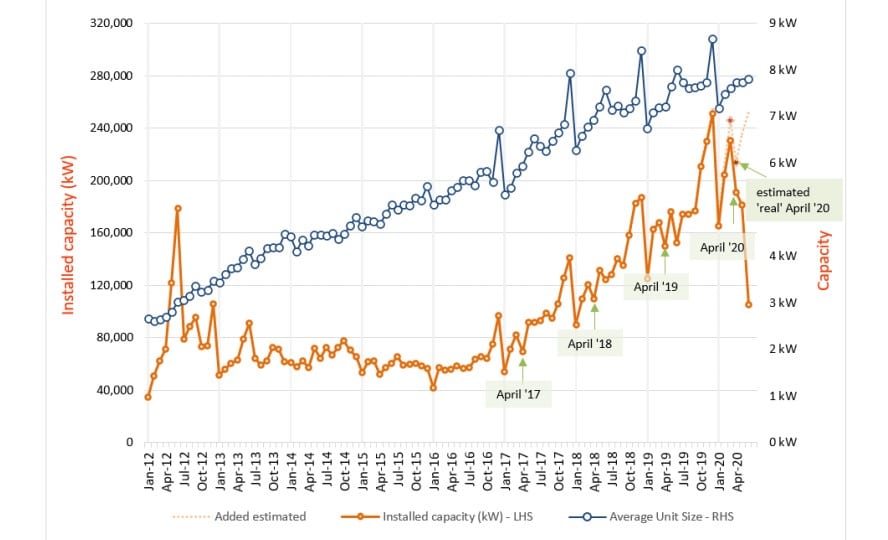
The biggest takeaways from AEC’s 2020 Q2 Solar Report
It’s that time of year again where the Australian Energy Council releases its insightful report on the state of solar across Australia. Quarter 2 of 2020 has already shown a rise in some of the most crucial trends for the industry, including a take-up of household installations, despite the impacts of COVID-19.
But instead of going into full-depth of the details of the report, we’re summing up what you need to know.
The current state of solar power in Australia
- More than 2.46 million solar PV systems have been installed across households throughout the country, as well as community centres, small businesses and a collection of schools.
- More than 86,000 new developments came to fruition, compared to 56,000 in Q1.
- The total capacity of new developments now sits at 11.4 gigawatts.
- April saw a decreased in new installations, but this is a historical trend that isn’t anything different than the normal.
- Despite COVID-19 lockdowns rolling out in March, data doesn’t reflect that these restrictions created a slowdown in new installations (see chart below).
- It is expected that there will be some influence of COVID-19 restrictions in future reports, especially as Victoria undergoes a second wave and Stage 4 regulations.
- March saw the highest number of installations in PV systems across every state except for Victoria. New South Wales, in particular, reached a record number of 8,500 new installations. Queensland hit 7,500 within the first half of 2020.

- South Australia overtook QLD in the number of battery installations in the first half of 2020.
- Currently, SA accounts for 46.6 per cent of the total systems installed, with Adelaide’s total about the equivalent of the total for all four states (NSW, VIC, QLD and WA).
- There are no new updates on state government rebates or schemes for battery solutions across the solar field. These remain the same as those rolled out earlier in the year.
Current rebates available to all states of Australia
NSW: Under the Empowering Homes Program, residents can access support across 300,000 households in NSW, with zero-interest loans available for battery and solar systems. The program was extended from February 2020, which now lets those throughout the Hunter region gain access.
SA: The Home Battery Scheme was decreased from $6,000 to $4,000 towards home solar batteries, as of 15 April 2020. It’s expected this will be further reduced due to market competition and other cost reductions across home battery solutions.
QLD: As of November 2018, QLD’s scheme has provided support for residents to access interest-free loans up to $10,000. This includes grants of $3,000 in aid to purchase combined solar battery systems or individual batteries. Those approved for the rebate have six months to install a system deemed eligible under the scheme.
VIC: The Solar Homes Program was extended out to 250 postcodes (adding 143). This includes 1,000 rebates of up to $4,838 for solar battery solutions throughout 2019 and 2020. Newer postcodes are now inclusive of those across regional Victoria. There are also interest-free loans now available for solar power systems.















